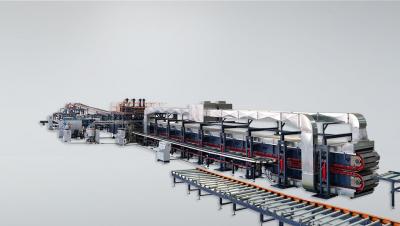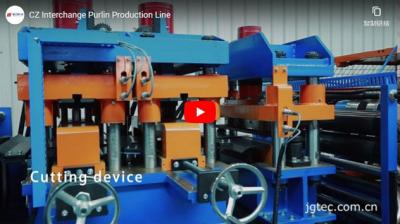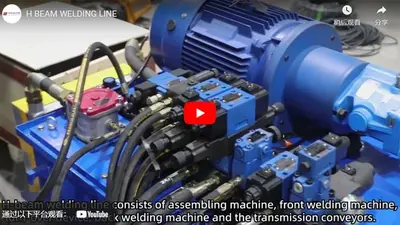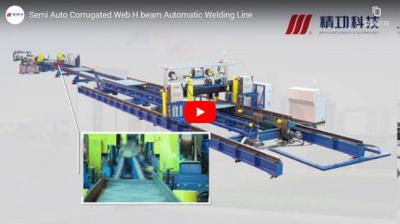What Is The Difference Between PIR Panel And PU Panel?
PIR panels and PU panels are very similar in many aspects: they have excellent thermal insulation performance, high tensile strength, light weight, and low cost. In addition, their installation methods are also quite similar.
Most importantly, both PIR panels and PU panels are made by injecting raw materials into the mould with high pressure. This explains why they look so much alike. However, the PIR panel and PU panel are actually two completely different products.
The main difference between them lies in the raw materials used to make them by sandwich panel production line.
Both PIR and PU panels are insulated panels, they are widely used in building construction because of their high thermal insulation and tensile strength.
PIR is synthetic fibreglass that has been coated with resin to form an insulating board, which is then pressed into a rigid panel. It can also be extruded into rods, strips or other shapes for specific applications. The material is made through a process similar to glass making but uses recycled materials such as scrap glass or plastic waste combined with natural resources like wood chips or virgin fibres. When combined with water-based binders it creates an eco-friendly product that performs just as well as traditional insulation products such as mineral wool.
PIR is often used as a thermal barrier between the home's outer walls (usually brickwork) and interior wall finishes such as plasterboard/drywall or plasterboard/linoleum cladding systems. PIR boards have excellent acoustic properties when compared with other types of acoustic insulation material due to their density and thickness.[8] They also provide good resistance against wind uplift forces on roof structures where the roof tiles attach directly to them.
The main difference between PIR and PU panels is the raw materials.
PIR panels are made up of closed-cell polyisocyanurate foam, which is a synthetic material that looks like styrofoam but has a higher R-value and a slower rate of conductivity. They cannot be used as roofing or walls, but they can be used as insulation between framing members in your attic or basement. The insulation value of PIR varies depending on its thickness: 1 inch provides R 13 to R 18 per inch; 2 inches provide R 20 to 25 per inch; 3 inches provide R 26 to 36 per inch.
PU panels are made with open-cell polyurethane foam that's blown into place under pressure (no solvents) at high temperatures over specially designed forms that are typically made from recycled wood products such as plywood or particleboard (although some manufacturers use steel). This type of panel has been used for decades in residential construction because it's lightweight and easy to install without needing special tools or equipment—just some basic carpentry skills! It does not have the same level of performance as PIR insulation does when exposed directly outdoors—but then again nothing really does except maybe spray foam insulation foam boards.
The raw material of the PU panel is polyurethane, which is a kind of polymer organic compound that is synthesized by the reaction between a diisocyanate or a polymeric isocyanate containing two or more two isocyanate groups and a macromolecular compound having active hydrogen atoms.
Polyurethane is a kind of polymer organic compound that is synthesized by the reaction between a diisocyanate or a polymeric isocyanate containing two or more two isocyanate groups and a macromolecular compound having active hydrogen atoms.
In contrast, the raw material of the PIR panel comes from the blowing agent (pentane) which is added to foam plastic. It’s a colorless, transparent liquid with an ether odour and it has low density, low boiling point, and low freezing point. When pentane evaporates, it will form gas bubbles in the foam plastic to change its structure, which causes it to become very light and porous. So in terms of structure, PIR panels are closed-cell structures while PU panels are open-cell structures.
The main differences between PU and PIR plasters can be summarized as follows:
PU plaster is lighter than PIR plaster because of its open-cell structure allowing air pockets within the foam material;
In addition, its flexibility makes it more comfortable when touching against skin or clothing;
Another advantage is that they are cheaper due to lower manufacturing costs;
They are also hygienic since they don't absorb dust particles like wool products do;
PIR and PU panels may look similar but they are actually completely different products.
PIR panels are a closed-cell structure material that is made from polyisocyanurate foam. PIR panels are non-toxic, low in formaldehyde, and have very good thermal insulating properties. They are used in the building industry as thermal insulation for roofs and walls. On the other hand, PU panels are an open-cell structure material made from polyurethane foam that has similar properties to PIR panels but it's much more flexible than PIR panels and can be cut easily with a knife or even scissors (yes we tested this). The main difference between these two products lies in their density: PU panel has a density of 5-6 kg/m3 while PIR panel has a density of 3-4 kg/m3 which means that if you use both types of materials together then there will be some gaps between them because one product would absorb heat better than another one.
As you can see, PIR and PU panels are two different sandwich panels China made from different materials. When choosing an insulated panel for your roofing or walling project, it's important to review your options and consider the differences between them so that they will meet the requirements of your building design. Click to learn more about the JINGGONG PU sandwich panel line, sandwich panel machine!

 CN
CN
 EN
EN
 fr
fr  de
de  es
es  it
it  ru
ru  pt
pt  ar
ar  th
th  pl
pl  ro
ro 








 Call us on:
Call us on:  Email Us:
Email Us:  #1809, Jianhu Rd, Keqiao, Shaoxing, Zhejiang, China
#1809, Jianhu Rd, Keqiao, Shaoxing, Zhejiang, China 